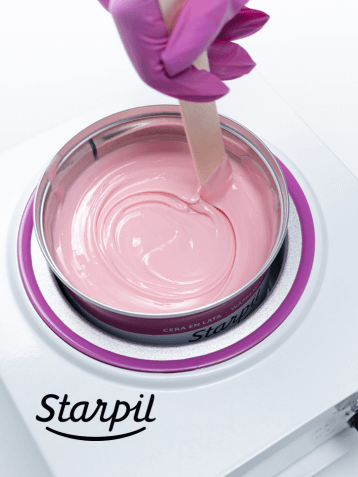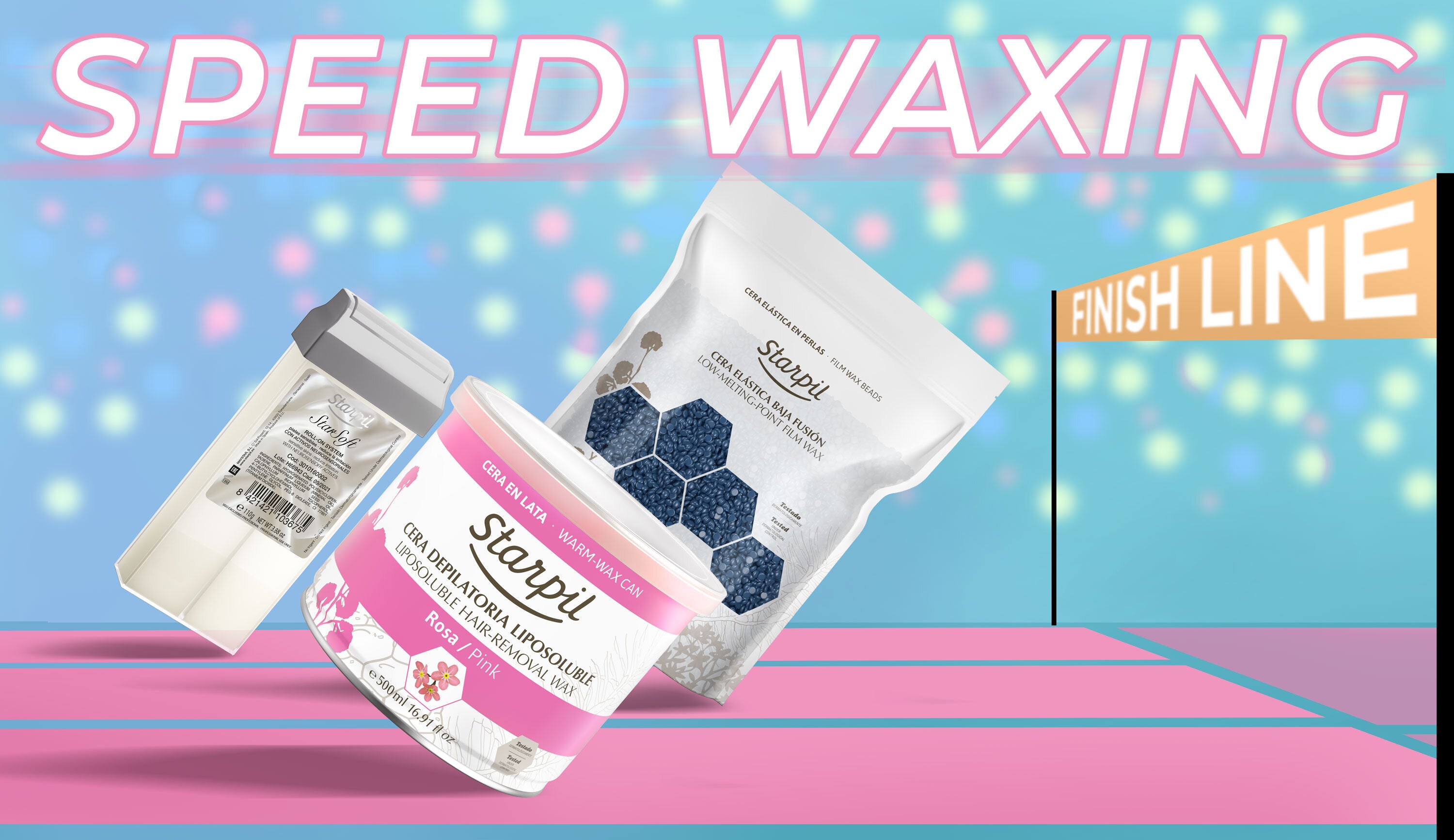Waxing Gone Wrong - Tips for Waxing Accidents

As a professional esthetician, your first priority is of course to always keep your clients safe, comfortable, and happy while providing them with the best possible hair removal results. However, even the most seasoned esthetician can experience accidents or incidents of waxing gone wrong. Mistakes do happen to the best of us, after all!
Table of Contents
How to Handle Waxing AccidentsHow to Treat Histamine ReactionsHow to Get Wax Off SkinHow to Get Wax Out of HairHow to Get Wax Out of ClothesHow to Get Wax Off SurfacesFinal ThoughtsWaxing accidents can happen to anyone, no matter your experience or skill level. What’s important is to know how to properly handle waxing mistakes to keep your clients safe, and to know how to get wax off the skin, out of hair, and off of various surfaces. This is also vital information for those looking to break into the industry or who are learning about how to perform waxing services at home. Remember, safety first!
READ: Best Hard Wax for Easy Hair Removal
How to Handle Waxing Accidents
Whether waxing professionally or waxing at home, knowing how to handle waxing accidents can make all of the difference between having a brief slip up to possibly causing you or your clients to get burned or injured - and nobody wants that.
Since it's better to be safe than sorry, every esthetician or at-home waxer should know both the right procedures to take during the waxing process to avoid injury and what to do in the event of waxing gone wrong.
READ: Best Esthetician Services to Offer Clients
Common Waxing Mistakes

One of the best ways to avoid making common waxing mistakes is to recognize them and break yourself of these habits before the mistakes or accidents occur. Education is key!
These common waxing mistakes can happen inside or outside of a salon, and even the most professional of estheticians can have a slip up now and then. Knowing what to look for will let you avoid making further mistakes in the future or will allow you to catch yourself before it happens.
Some of these mistakes can be on the part of your client, so make sure you provide them with the right education to keep them safe and their results looking the best they possibly can.
Trimming Clients’ Hair too Short
A common mistake estheticians can make when trimming clients’ hair before a waxing service is to cut it a little too short. Of course, client hair should always be at least the length of a grain of rice to safely wax. However, if you’re just eyeing hair’s length whilst trimming it, it can be easy to cut it a little too short.
Waxing hair that is too short for safe waxing can put clients at risk for injury or skin lifting. Always make sure hair is at a safe length for waxing before commencing with service.
Not Having the Right Wax Consistency
A hallmark of wax being too hot is excessive drippage or consistency that’s more liquid than the honey-like texture you should always shoot for. This is important to keep in mind for not only the quality of results your wax will provide (which won’t be great!), but first and foremost the safety of your clients.
Not only can wax that’s too hot burn, tear or stick to clients’ skin and cause injury, but excessive dripping can easily get on hair or parts of the body that aren’t meant to be waxed.
Be especially cautious of wax that might be too hot when waxing the face, especially the nose or ears. These areas are especially sensitive and prone to burning. They’re also frequently surrounded by facial hair, like beards or mustaches, that your clients probably want to keep intact. Make sure your wax is of the right consistency, and cover up any hair or areas that you’ll want to keep safe from possible wax dripping.
Not Following Aftercare Procedures
This one is mostly on your clients to properly carry out, but it’s on you to provide them with the tools and education so that they can properly adhere to the right pre & post-wax care routine!
Before a wax, make sure your clients have showered and have exfoliated with Starpil Pre-Wax Gel to properly cleanse the skin and provide the ideal surface for waxing.
Additionally, after their wax, clients should always soothe and moisturize skin with Starpil’s Post-Wax Lotion, before following up to lock in hydration and remove any waxing residue with Starpil’s Post-Wax Oil.
If clients don’t follow the proper pre and post-wax care routine, they increase their risk for excess waxing pain, patchy results, and irritation or inflammation.
Not Waxing Regularly
Waxing following hair’s natural growth cycles is important to not only wax at the right intervals and when hair is at the proper length, but so that they can experience less hair growth over time. Waxing at regular intervals also allows clients to have less painful waxes as they become more used to the process.
Waxing in the Wrong Direction
One of the biggest mistakes professionals or at-home users alike can make is to apply and remove wax in the wrong direction. This can cause skin tearing or lifting for clients.
When applying wax, it’s imperative to apply in the direction of hair growth and to remove parallel to the skin in the opposite direction of hair growth.If you fail to apply or remove in the correct direction, your client will run the risk of injury.
Not Knowing Clients’ Skin Types or Skin Routines
Before waxing clients, make sure to properly assess their skin type and sensitivity levels to make sure you’re using the right formula for their skin. Not using the correct formula can result in skin reactions, or increased inflammation or irritation.
The same can be said for clients who do not inform their estheticians as to their skincare routines, especially if they incorporate skincare products like retinol into their regimens. This can result in adverse reactions and injury to the skin.
Not Heating Wax Correctly
Having wax that is too cool or too hot can cause various issues. Having wax that is too cool will not properly spread or adhere to the skin, and wax that is too hot can burn or injure clients.
Make sure your wax is heated to the ideal temperature that your formula requires for ideal spreadability and pliability - and to keep your clients safe!
READ: Waxing and Dry Skin
How to Treat Histamine Reactions

Oftentimes, clients and estheticians alike might not even be aware of possible allergies to certain ingredients or waxing formulas. This can result in adverse allergic reactions or histamine reactions.
Histamine reactions are caused by a client’s hair follicles being shocked by the sudden removal of hair. The symptoms of such can materialize as prolonged redness post-wax, hives, sneezing, or red bumps after waxing. These reactions can show up and persist for as long as 48 hours after waxing.
Histamine reactions can be treated through over-the-counter allergy medicines like Benadryl, or hydrocortisone cream to soothe skin. Skin can also be soothed through the use of Starpil’s Calendula Post-Wax Mousse and Calendula Post-Wax Oil.
READ: What is a Histamine Reaction After Waxing?
How to Get Wax Off Skin

Beyond handling client allergic reactions and going the extra mile to ensure that you avoid common waxing mistakes, it’s also important to know how to get wax off of your client’s clothes and skin in the case of spillage or incorrect application.
To get hair removal wax off skin, there are a couple of ways to approach the situation:
Hot Water CompressesBegin the process of wax removal by washing the area thoroughly with warm water and moisturize with a lotion that is water-based to loosen the wax that’s adhered to anywhere it shouldn’t be.
Follow this up with a hot water compress. Soak a clean washcloth in hot water, and place it on the wax or wax residue to soften the wax. Let it sit in the area for around 1-2 minutes. Once wax is loosened, remove it with your washcloth.
Mineral OilMineral oil can also be used to remove small areas of wax or wax residue from the body. To use oil to remove wax, first dip a cotton pad in warmed oil (not hot!). Hold your soaked cotton pad onto the area of wax or wax residue until it's saturated (for about 1-2 minutes). Once wax and wax residue has been loosened, wipe off your residue or wax with your cotton pad.
Petroleum JellyApply a generous amount of petroleum jelly to wax or wax residue. Leave it on the area for 5 minutes before wiping clean.
AlcoholDip a cotton pad in alcohol and rub wax residue or wax using a circular motion until the residue dissolves or the wax peels off the skin. Once wax is removed, moisturize skin with Starpil Post-Wax Lotion to nourish skin.
IceThis might seem like a weird one, but it works! Hold an ice cube to leftover or residue wax and hold for around 30 seconds, or until wax becomes brittle and begins to flake. If the wax doesn’t begin to flake, don’t try to scrape or force it off! This can irritate the skin. Instead, use a different wax removal method.
For wax residue that’s just been left in small amounts after a waxing service, you can also use Starpil’s Post-Wax Oil to remove anything left over after your service. Apply one pump of this oil to a cotton pad or clean hands before massaging into your client’s skin.
READ: How to Use Hard Wax Like a Pro: The Complete Guide
How to Get Wax Out of Hair
If you’ve unfortunately spilled wax or just gotten some wax in your or your clients’ hair from an accidental swipe or two, getting it out might seem tricky. Don’t worry, however, you don’t have to cut anything off! In the case of hard wax, this can be removed from hair through a combination of techniques.
To remove hard wax from hair, you’ll need to wrap the area with wax stuck in it with paper towels. Use a hair dryer on high to reheat the wax through the paper towel. This will allow the wax to not only melt off, but to be immediately absorbed by the paper towel in the process so it doesn’t get on anything else.
Once the wax has fully melted and seeped into the paper towel, remove and repeat the process with clean paper towels until all of the wax has come off.
After melting wax off from the hair, there might still be some residue left over. If this occurs, soften wax again by wetting the hair with warm or hot water and apply conditioner to the area with the remaining wax. Massage or work the wax out of hair by hand and rinse.
If wax still remains after washing out the conditioner, apply shampoo to the area and repeat the process to remove any wax left over.
READ: Brazilian Wax Etiquette: Embarrassing Questions Answered
How to Get Wax Out of Clothes
If you’ve gotten wax on you or your client’s clothes and are panicking to try and figure out how to effectively remove the wax without damaging, staining, or having to replace your client’s outfit, don’t worry! This is a common occurrence that can happen to anyone.
There are plenty of techniques to remove wax from clothing, but keep in mind that depending on the fabric of your clients’ clothes, they could still stain. Always make sure to recommend that your client come in their casual clothes that they won’t get too upset for in the event of a stain, or cover anywhere you might suspect could be in the danger zone of wax dripping.
To remove wax from clothes, try out the following methods:
- Melt wax using a hair dryer on high heat and use paper towels to dab the spot or to try and gently peel or work wax out of the piece of clothing.
- At-home users or clients can also try to remove wax from clothing in their own home by using an iron (set on low).
Place an ink-free paper bag in between the iron and clothes, as well as between the clothes and your ironing board. This will melt the wax out of the fabric, where it will be absorbed into the bag. Make sure to adjust the bag as needed so that wax is continually absorbed into a clean area of the bag.
READ: Waxing at Home: The Complete Beginner’s Guide
How to Get Wax Off Surfaces
One of the easiest things to get wax on during a service is furniture or hard surfaces. To remove wax from these surfaces, take several ice cubes and rub over the wax to further harden it on your surface.
Once it’s hard, use a scraper that won’t damage your counter or other surface to chip it off gently and slowly. If you’re concerned about the surface itself, make sure you have a tool at the ready that’s attuned to the surface and won’t cause damage. Never use a sharp object that could scratch your surface.
To remove wax from furniture, use a hair dryer on high to melt the remaining wax and dab or wipe using paper towels. Just as is the case with clothing, depending on the specific fabric, wax could stain your furniture. Make sure to research your furniture to see its propensity to stain from depilatories.
If residual wax remains on hard surfaces or furniture, use Starpil’s Post-Wax Oil to gently loosen oil from the surface before wiping clean.
How to Get Hair Removal Wax Out of Carpet
As is the case with regular surfaces or furniture, hair removal wax can easily drip or end up in carpeting, especially for at-home users who don’t have a designated space for services.
To remove wax from carpet, you’ll use a similar method as the removal of wax from furniture or soft surfaces. Use a hairdryer set on high to melt down your remaining wax, and use clean paper towels to absorb and wipe wax out of your carpet.
Whenever removing wax from hard surfaces, furniture, or carpeting, remember to always be gentle, and never try to rush things. Getting too aggressive with your scraping or with removing can cause things to be damaged or to stain more, so make sure to have patience and keep your wax contained.
READ: How to Clean Your Wax Warmer Quick & Easy
Final Thoughts
Whether you’re a professional esthetician with years of experience under your belt or an at-home user just trying things out for the first time, never forget that waxing mistakes can happen to anyone! In the cases of waxing gone wrong you might experience, maintain your patience and approach the removal process gently to keep your clients safe and your surfaces undamaged.
Getting wax on surfaces or clothing can be nerve wracking, but knowing how to handle yourself and clients when waxing goes wrong is key to keeping everyone happy. Having these techniques in your back pocket will let you immediately know what to do in the event of a waxing accident so you can confidently handle the situation and reassure your client.
FAQs | Waxing Troubleshooting
What are the most common waxing mistakes that lead to skin damage?
Several critical waxing mistakes frequently lead to skin damage, with improper temperature control being perhaps the most dangerous. Wax that's too hot can cause serious burns, while wax that's too cold won't adhere properly to hair, resulting in ineffective removal and repeated pulling of the same area. Incorrect application technique (applying wax against the hair growth direction or in layers that are too thick) can cause unnecessary trauma to the skin.
Double-dipping applicators introduces bacteria that can lead to folliculitis and infections, particularly in sensitive areas like Brazilian or facial waxing. Inadequate pre-wax preparation, including improper cleaning, can lead to skin lifting and tearing. Poor post-wax care, such as touching freshly waxed areas with unwashed hands or applying products that trap bacteria, often results in breakouts or infections.
How can I tell if my skin reaction is normal or a sign of a waxing complication?
Distinguishing between normal post-wax reactions and concerning complications requires understanding typical healing timelines. Normal reactions include temporary redness, minor swelling, and slight tenderness that appears immediately after waxing and typically subsides within 24-48 hours. Small red bumps often appear shortly after treatment and should gradually diminish within 1-2 days with proper aftercare.
However, several warning signs indicate potential complications: severe, intensifying pain; significant swelling that increases over time; spreading redness beyond the treatment area, broken skin, oozing, or bleeding not caused by the immediate waxing process; pus-filled bumps that develop 24-72 hours post-wax, unusual bruising, persistent, intensifying itching lasting more than 48 hours, skin discoloration that doesn't fade after a week; raised, red rash with defined edges appearing after 24 hours, which may indicate allergic reaction.
What should I do if my skin is burned or damaged from waxing?
Immediate and appropriate care for skin damaged during waxing can significantly minimize long-term complications. For minor waxing burns (redness without blistering), immediately apply a cold compress for 15-20 minutes to reduce inflammation and pain, but never apply ice directly to injured skin. Clean the area gently with cool water and mild, fragrance-free cleanser. Apply a thin layer of pure aloe vera gel or a specialized post-wax lotion to soothe and begin the healing process. For more serious burns with blistering, clean very gently without breaking blisters, which act as natural barriers against infection. Apply an antibiotic ointment and cover with a non-stick sterile bandage.
For skin lifting or tearing, keep the area clean and apply a thin layer of petroleum jelly to create a protective barrier while the skin regenerates. Regardless of the damage type, avoid sun exposure on the affected area. Take over-the-counter pain relievers if necessary for discomfort.
Seek immediate medical attention for extensive burns, large areas of skin removal, signs of infection (increasing pain, warmth, swelling, pus, or red streaks extending from the area), or if the damaged area is on your face or in sensitive regions like the bikini area..
How can I identify an unprofessional waxing salon before booking an appointment?
Identifying unprofessional waxing salons before experiencing a negative outcome requires attention to several key warning signs. Begin by researching the salon's licensing and certifications and carefully examine online reviews, looking specifically for mentions of hygiene practices, skin complications, or infection issues, which are significant red flags regardless of overall ratings.
Professional salons will inquire about your skin conditions, medications, and allergies before scheduling services, as these factors impact treatment safety. Observe the salon's cleanliness standards: visibly clean treatment rooms, fresh linens for each client, proper glove-wearing, and sealed, sterilized tools. Watch for double-dipping practices, where the same applicator is reused between dips into the wax pot, which transfers bacteria between clients and indicates dangerous hygiene shortcuts. Finally, trust your instincts; if a salon feels unclean or if staff seem rushed or inattentive during your consultation, these are valid reasons to look elsewhere for professional waxing services.
What preventative measures can clients take to reduce the risk of waxing complications?
Clients can significantly reduce their risk of waxing complications by taking proactive measures before, during, and after their appointments. Before booking, disclose relevant medical history and current medications to your esthetician, as certain conditions (diabetes, circulation problems) and medications (Accutane, retinoids, antibiotics) can increase skin sensitivity and complication risks.
Ensure proper hair length (ideally ¼ inch, about the length of a grain of rice) for optimal waxing results. During your appointment, communicate clearly with your esthetician about your pain tolerance and previous waxing experiences, and speak up immediately if something feels wrong, such as wax that feels too hot or unusual pain levels. After your service, follow post-wax care instructions meticulously and maintain regular waxing schedules (every 4-6 weeks) to train hair growth cycles and reduce the trauma of each individual session.




















